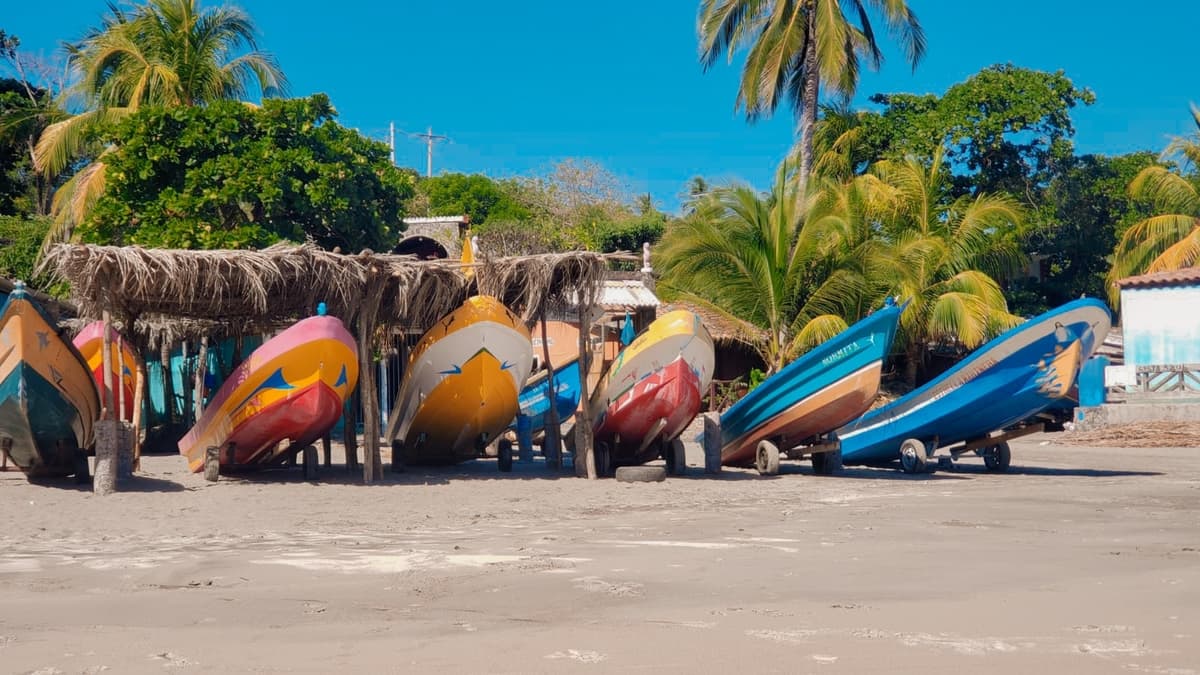Planning a trip to the Land of Pura Vida? Here’s what travelers and digital nomads need to know about bringing electronics into Costa Rica (laptops, phones, drones, etc.) and other electronics into the country.
During the second half of last year, travelers and digital nomads entering Mexico started receiving shocks upon entering the country. Mexican authorities began charging import duties on extra electronics like laptops and tablets. Apparently, there’s a rule in Mexico that allows – according to the government – only “ONE laptop, notebook, omnibook or other portable computing device.”
The law’s been around forever, but only began being seriously enforced around September. It made quite a bit of news around the digital nomad community at the time, when people began being fined 19% of the value of their extra electronic and being told they couldn’t bring in both their laptop and iPad. First world problems, for sure, but for many digital nomads, it became an issue. And it got us thinking. What are the rules for this sort of thing in Costa Rica? Or elsewhere in the region? And how does Costa Rica compare with Mexico and its Central American neighbors regaining this?
Costa Rica’s Rules for Bringing in Electronics
We should start here really by explaining why we’re focusing on Costa Rica more than any other country. The reason’s simple: Costa Rica still attracts more travelers than the rest of the region. It’s still a digital nomad/remote work hotspot, and is one of only two Central American countries with a special digital nomad visa. Most people coming down to Central America to work remotely will pass through Costa Rica on their travels. Well, that’s the reasoning, anyway.
For most tourists, bringing one or even two used laptops is typically not a problem. Many travelers report arriving with multiple devices without issue, as long as everything looks used and personal. That said, the official customs policy suggests a limit of one laptop per traveler.
If a device’s value exceeds $500 or if customs suspects commercial use, you may need to complete a Form D-151 and potentially pay import taxes. These can range widely; laptops, for example, usually face a 13% import duty, a 13% VAT, and sometimes an additional 1% levy, bringing the total close to 28% of the item’s CIF (cost, insurance, and freight) value. Phones have a similar tax load, while luxury electronics like, say, gaming consoles may be taxed as high as 49% or more.
Under the Digital Nomad Visa, remote workers can bring in essential electronics like laptops, monitors, phones, and cameras without paying any import taxes at all. This applies both to items brought in at arrival and those shipped in later.
However you enter, the key is to stick to reasonable quantities, avoid brand-new boxed items, and carry proof of ownership – more on this below but Apple enthusiasts have a heads up here, if asked, because they can use their Apple watch serial number lookup to easily retrieve registration data).
Other Central American Countries at a Glance
While Costa Rica has relatively clear rules for digital nomads bringing in work gear, things get more opaque across the rest of Central America. Generally, if you’re arriving with personal-use items, you won’t face issues. But enforcement can vary by border and by the mood of the agent you encounter.
Belize
Belize is fairly permissive. Travelers commonly bring in multiple devices without incident, though the usual advice applies: don’t bring boxed items, keep everything accessible, and protect your electronics from Belize’s humid, salty air.
El Salvador
El Salvador officially allows travelers to bring in one laptop duty-free as part of their personal belongings. A second laptop doesn’t typically raise red flags, although technically, anything over the allowance could be subject to duties. In practice, enforcement is light, especially for tourists.
Guatemala
Guatemala is relatively relaxed for tourists bringing laptops and other gear in their carry-on. You’re unlikely to be questioned unless your devices are boxed or brand-new. Some locals suggest “smudging up” your gear a little or removing tags to avoid the appearance of resale intent. If devices look like they’re for sale or commercial use, you may face import duties ranging from 0-15% plus a 12% VAT. The key is avoiding anything that suggests resale intent – remove devices from boxes, use protective sleeves, and be prepared to explain their personal use.
Honduras
Honduras permits travelers to bring in more than one laptop for personal use, though customs may scrutinize high-value items or those appearing new. The biggest concern here is with items valued over $2,500, which may require declaration paperwork. Otherwise, travelers report few issues at entry. Import duties, when applied, typically run around 18% plus additional fees.
Nicaragua
Nicaragua has more of a reputation for unpredictability. While their rules allow for personal items, travelers have reported occasional confiscations or unexpected duty charges. A single laptop and phone are usually fine, but bringing extras (or anything new) may trigger fees unless you clearly explain their personal use. Border crossings by land are often more lenient than arrivals at Managua’s airport.
Panama
Panama also has a digital nomad visa and allows travelers to enter with personal electronics, including two laptops, without much hassle. Some customs agents may ask for proof of ownership or open the devices for inspection, but routine travelers report few problems as long as items look personal and not commercial. When duties do apply, they’re usually around 15%. Panama’s experience with international travelers shows in their pragmatic approach to personal electronics.
In short, Costa Rica and Panama offer the most predictable customs experience for nomads. Nicaragua is the riskiest if you’re carrying lots of gear. Elsewhere, if you follow basic guidelines – no new packaging, limited quantities, personal use only – you’ll likely be fine.
Practical Advice for Travelers & Nomads
If you’re traveling with laptops, phones, cameras, or other personal electronics, the best approach is to think ahead and stay organized. Knowing what to bring, how to pack it, and what to declare can save you time, money, and stress at the border.
What Customs Officers Are Looking For
Customs agents are trained to spot signs of commercial intent. It’s not unusual for digital nomads to carry multiple devices, but three boxed phones or two new laptops might raise questions. The concern isn’t that you have electronics, it’s that you might be bringing them in to resell. Anything new, high-value, or in packaging may be subject to import duties unless you can prove it’s yours and intended for work or personal use.
How to Prove Ownership of Your Gear
The easiest way to avoid misunderstandings is to show that your electronics belong to you. Here are some tips:
- Keep your receipts. Screenshots or PDFs of purchase confirmations work well
- Take photos. Document your gear and its serial numbers before packing
- Use registration data. As mentioned earlier, brands like Apple let you verify ownership with a serial number lookup
- Remove packaging. Don’t bring in sealed boxes or brand-new-looking items unless necessary
When and What to Declare
Costa Rica’s customs forms require travelers to declare items over a certain value. If you’re entering with a brand-new laptop or phone, multiple devices that look unused, a drone or high-end camera gear, or anything valued over $500, you should be prepared to declare it. That doesn’t automatically mean you’ll pay import taxes, but being transparent helps avoid surprises.
If you’re entering under the nomad visa, you can bring in the electronics necessary for your remote work (laptops, cameras, monitors, phones, etc.) free of import duties. Just remember: this is a one-time exemption, and you’ll need to declare the items at customs with proof of ownership.
Final Thoughts
Bringing electronics into Costa Rica is easier than many other countries in Central America as long as you understand the rules.
Ultimately, customs enforcement in this part of the world varies widely. One agent might wave you through while another might inspect every device in your bag. The thing to remember is that traveling with electronics is normal nowadays, but looking like a walking electronics store isn’t. Pack smart, be honest, and treat every entry like the official process it is. Most importantly, stay calm and courteous. That alone often goes further than anything else.



